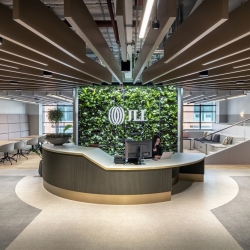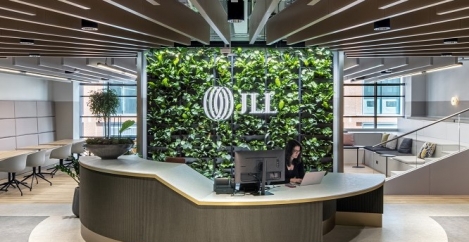November 29, 2023
Demand for sustainable buildings and tight regulations drive business case for investment
 The current economic environment is creating challenges for investors and occupiers to make the case for investing in retrofitting and futureproofing their real estate. JLL’s new The Commercial Case for Making Buildings More Sustainable report outlines three key factors that should be prioritized in occupiers’ and owners’ decision-making to create a more resilient and sustainable built environment.
The current economic environment is creating challenges for investors and occupiers to make the case for investing in retrofitting and futureproofing their real estate. JLL’s new The Commercial Case for Making Buildings More Sustainable report outlines three key factors that should be prioritized in occupiers’ and owners’ decision-making to create a more resilient and sustainable built environment.
In many global markets, rising corporate demand for buildings with sustainability credentials will have an impact on office market dynamics. Across 20 major office markets, including New York, Paris and Singapore, only 34 percent of future demand for low-carbon workspace will be met in the next several years. In other words, for every 3 square meters of demand, only 1 square meter is in the current pipeline.
The way occupiers think of sustainable buildings is also changing. Historically, green certifications have been the primary mark of sustainable buildings and tenants have been willing to pay the price. Transaction evidence from 2023 shows healthy rental premiums are still being achieved for certified buildings across a range of global office markets – but the industry is shifting.
Tenants will increasingly seek environmental performance indicators, such as energy intensity and electrification, on top of green credentials. JLL is already seeing evidence of this in advanced European markets, like London and Paris, where low-carbon prime office spaces are reaching historic rental highs this year, even with an overall slowdown in the sector.
“Despite the current headwinds from today’s global economic environment, the business case for making investment into decarbonizing and resilience across real estate portfolios is getting even stronger,” says Guy Grainger, Global Head of Sustainability Services and ESG. “Taking action now will minimize the business cost of ever more frequent climate events and maximize the commercial benefit from the incredibly low supply of net zero carbon buildings in the world.”
Risk and reward
Although market forces driving investors and occupiers are moving faster than regulations right now, new legislation is on the horizon at an international, national and most stringently at a city level. Policies from 16 global cities covering carbon, energy, buildings circularity, biodiversity and resilience show a wide spectrum of commitment and action. For instance, ‘Climate Progressive’ cities such as New York, Paris and Amsterdam are rolling out an array of policy instructions covering new and existing commercial and real estate. New York has introduced several pioneering local laws, while Paris is taking the lead in considering embodied carbon and Singapore has set out a holistic approach to greening its buildings.
The damage caused by increasingly frequent and intense weather events is a mounting concern for real estate. Part of building a strong business case will involve understanding the risks of disruption to business operations and potential damage to buildings. One of the biggest challenges in assessing climate risk is the wide range of approaches and the lack of consensus on standardization. Some providers are thinking about value at risk in terms of insured value, others are looking at the change in asset value or replacement cost.














